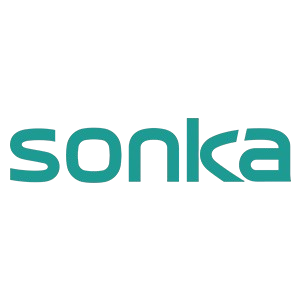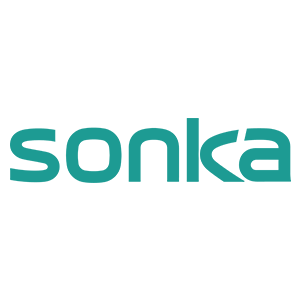A user-friendly touchscreen interface is crucial for telemedicine kiosks to be effective across all age groups. When a design is intuitive, it enhances accessibility and engagement by making it easier for patients to interact with the kiosk. Studies show that such interfaces not only reduce wait times but also significantly increase patient satisfaction. Common design elements like large icons and straightforward navigation help cater to a diverse user base, ensuring a seamless interaction experience. By focusing on clarity and simplicity, these interfaces make it easier for patients to input their information and follow health-related instructions without feeling overwhelmed or confused.
High-quality video conferencing abilities are indispensable in a telemedicine kiosk to ensure that both the healthcare provider and the patient can communicate effectively. This demands the integration of high-resolution cameras and adequate bandwidth to deliver seamless video communication. Statistics indicate that better video quality directly impacts patient diagnosis and satisfaction, with clear visuals allowing healthcare providers to make more accurate assessments. Furthermore, privacy concerns are mitigated through secure video conferencing technologies, instilling trust in patients by ensuring that their consultations remain confidential and personal.
The inclusion of basic vital signs monitoring tools in telemedicine kiosks is critical for enabling immediate and accurate health assessments. These tools measure essential healthcare metrics such as heart rate, temperature, and blood pressure, which are pivotal in evaluating a patient's immediate health condition. Incorporating such tools into telehealth services ensures that data is collected accurately and promptly, facilitating timely medical consultations. Evidence backs the idea that precise and real-time monitoring can greatly improve health outcomes by allowing interventions to occur before issues escalate, thus providing patients with a higher standard of care.
Body composition analysis technology is revolutionizing the way we approach comprehensive health evaluations. By providing insight into the fat versus muscle ratios, it allows healthcare providers to tailor health recommendations more accurately. According to multiple studies, such as those published in the Journal of Obesity, body composition analysis can significantly aid in obesity prevention and chronic disease management. This technology serves as a critical tool in telemedicine, enhancing patient assessments remotely by integrating with health records for personalized care.
The integration of 12-lead ECG technology and blood pressure monitoring into telehealth kiosks is profoundly influential in remote diagnostics. Devices like these enable the detection of heart conditions with precision and immediacy. According to the American Heart Association, the combined use of ECG and blood pressure monitors significantly aids in the early detection of cardiovascular diseases. This integration must comply with stringent regulatory standards to ensure accurate patient data and effective device usage, ultimately enhancing telehealth reliability.
Tracking blood oxygen levels is a key element in diagnosing and managing respiratory issues through telehealth solutions. The rise in respiratory illnesses, as reported by the World Health Organization, underscores the need for rapid and accurate blood oxygen monitoring. Future advancements in this technology are anticipated to improve accuracy and user accessibility, enabling healthcare providers to offer high-quality virtual care. Additionally, these advancements are crucial in enhancing telehealth diagnostics and facilitating effective treatment at home.
Ensuring the protection of patient data is crucial, with HIPAA regulations serving as the foundation for encryption standards in telemedicine. HIPAA regulations mandate that healthcare providers implement safeguards to protect the privacy of health information, which includes stringent encryption protocols. With data breaches on the rise, affecting countless health organizations, it is imperative to adopt robust encryption technologies to safeguard sensitive patient information. For instance, between 2009 and 2019, the United States experienced over 3,200 data breaches, impacting more than 230 million health records, underscoring the urgent need for reliable encryption solutions. Various encryption technologies, such as asymmetric encryption and end-to-end data encryption, offer telemedicine kiosks the necessary tools to maintain data confidentiality and integrity. These solutions are vital in preventing unauthorized access and ensuring compliance with HIPAA standards.
The integration of cloud-based systems with Electronic Health Records (EHR) is essential in providing secure access to patient data while ensuring scalability and flexibility. Cloud infrastructure not only facilitates easy storage and retrieval but also maintains comprehensive security measures, protecting sensitive data from unauthorized access. According to a study from the Journal of Health Informatics & Management, EHR integration has significantly enhanced health outcomes and care coordination by streamlining access to up-to-date patient records. This integration empowers healthcare providers to make informed decisions, thereby improving patient care quality and enhancing treatment pathways. Ensuring secure data transfer between kiosks and EHR systems involves adherence to standard protocols, such as the Health Level Seven (HL7) framework, which safeguards data during transmission. Implementing robust security measures ensures the safe exchange of crucial health information, thereby supporting efficient and secure telehealth services.
The Efficient Physical Examination Smart Health Checkup Kiosk excels in conducting remote physical exams efficiently by integrating advanced diagnostic features. It includes high-quality sensors for measuring vital signs, precise measuring systems for body composition analysis, and user-friendly interfaces that streamline the examination process. User feedback highlights its reliability and seamless performance, making it a popular choice among healthcare providers seeking to enhance remote care capabilities. Performance metrics show significant improvements in patient satisfaction due to quick and accurate diagnostics, further validating the kiosk's effectiveness in modern healthcare settings.
The SONKA Telehealth System represents an innovative step forward in telehealth technology by offering a multifunctional kiosk that expands access to healthcare services. Its integrated systems allow for comprehensive health monitoring, including glycemia, cholesterol levels, and body temperature, all accessible via an intuitive touch display. Users praise the kiosk's ease of use and multifunctionality, noting an enhanced experience that makes health consultations more efficient and accessible. Such positive testimonials point towards the system's ability to meet diverse healthcare needs in a single solution, streamlining patient care across various settings.
Body analyzers with touch display technology are pivotal in personal health assessments, offering users easy access to complex health metrics through intuitive interfaces. These machines measure a variety of health indicators, including body fat percentage, muscle mass, and visceral fat levels. The integration of touch display technology enhances user interaction, providing quick access to personal health data. Recent statistics indicate high patient satisfaction and usage rates, emphasizing the machine's effectiveness in aiding individuals to make informed decisions regarding their health.
Full-body check-up kiosks equipped with remote diagnosis capabilities serve a crucial role in community health settings by providing comprehensive health evaluations without physical clinic visits. These machines enable the constant monitoring of vital signs, aiding in the accurate diagnosis and effective tracking of patient health outcomes. Data indicates the increasing satisfaction among users due to these machines' ability to offer essential healthcare services remotely, thereby improving overall healthcare accessibility in underserved regions.
Integrated cardio-respiratory monitoring units, such as the Healthcare Holter ECG and blood oxygen combo, are essential to telemedicine by offering comprehensive monitoring of heart and respiratory health. These units utilize advanced technology to monitor heart rhythms and oxygen saturation accurately, optimizing patient outcomes. Statistical evidence supports the efficacy of combined monitoring devices, revealing significant improvements in managing chronic conditions and enhancing patient care delivery. This comprehensive approach is critical for telemedicine kiosks, fostering a holistic monitoring perspective that aligns with evolving healthcare demands.


Copyright © 2025 by Shenzhen Sonka Medical Technology Co., Limited - Privacy policy